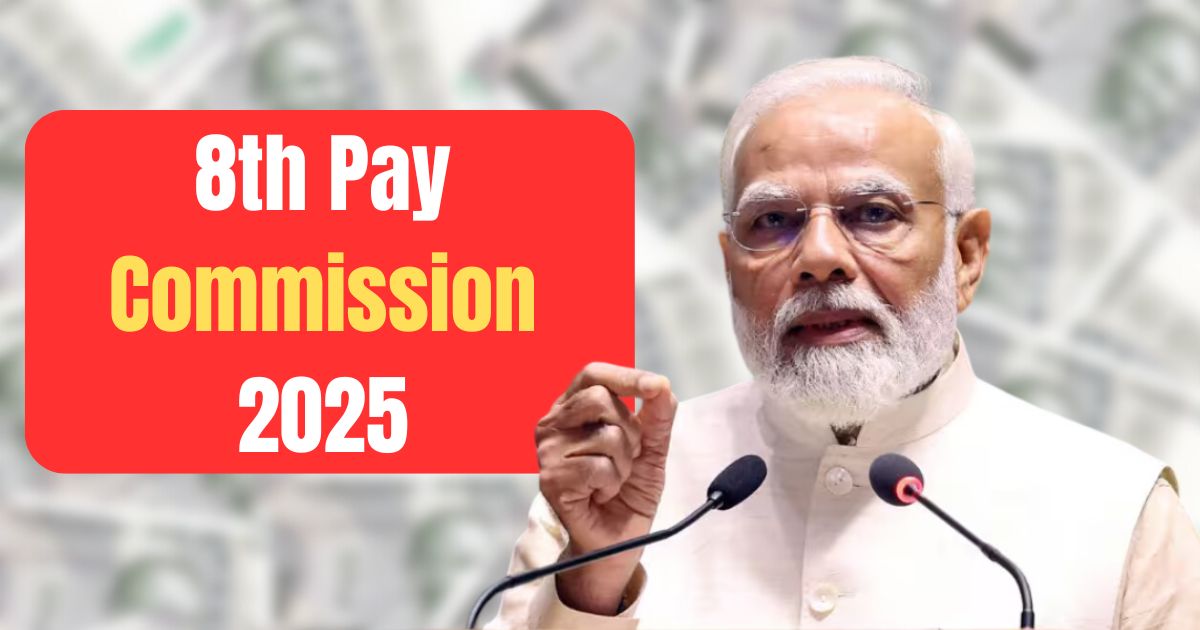Visualize punching the clock at your government office and finding out that your paycheck has gone up by a third. The 8th Pay Commission is the assurance to millions of central government workers that they will get nothing but that. The countdown to 2026 has begun under the increasing pressure of inflation – employees and pensioners alike are hopefully watching the year unfold. The eventuality of the renewal could spin a completely new tale of financial security for a total of 1.15 crore staff and retirees combined, introducing a mixed feeling of optimism and a little bit of doubt.
The Genesis Approval And Anticipation
On the 16th of January 2025, the Union Cabinet chaired by Prime Minister Narendra Modi approved the formation of the 8th Pay Commission. This action was in line with the previous commission’s—7th’s—expiring tenure lasting for a decade which is about to end in December 2025. Union Minister Ashwini Vaishnaw let the word out about the establishment, creating a buzz all over the country. Yet, after nine months, there still is no official notification. Nobody has been named to be the chairman or the members of the commission, nor have the Terms of Reference (ToRs) been issued. Employee unions like NCJCM sent letters in June 2025 asking the government to take prompt action to clear the doubts.
Timeline Promise Of 2026, Shadows Of Delay
Experts say that January 1, 2026, is the date for implementation, which is perfectly timed with the usual 10-year cycle. According to parliamentary signs, the consultations with the states are being conducted. But history speaks caution. The past commissions took 2-3 years from birth to rollout—the 7th took a whole 33 months. With ToR stalled as of October 2025, the unconfirmed rumors surrounding 2027 or even 2028 emerge. Budgetary limitations present a major challenge to the government proving its commitment during the economic instability.
Core Reforms Fitment Factor And Pay Matrix Magic
The fitment factor, a multiplier applied to the basic pay, is what keeps the heart of the commission beating. The ratio of the 7th commission was 2.57, which created a new base of Rs 18,000. The present projections are coming up to 2.86 or 3.68, which will take the beginner’s salary to Rs 26,000-Rs 41,000. It is not just a number’s game, it is a rescue from the burden of high prices. The new pay matrix will let the promotions roll through 18 levels to make sure the progression is balanced. Basic pay may go up by as much as 20-30%, based on inflation data from the All-India Consumer Price Index.
The Ripple Effect Economy And Equity
This commission is no stranger; it ignites consumption, thus, it supports the economy by adding billions to households, hence, propping up GDP. The benefits of central staff are the first step and then they are generally extended to state employees thus influencing 1.2 crore lives. However, the question of equity remains—will soldiers get the same treatment? The private sector may follow the hike pattern in order to keep their talent. As of October 18, 2025, DA is knocking at the door of 53-55%, which is a temporary measure until the big reveal.
| Pay Commission | Year Constituted | Implementation Date | Fitment Factor | Min Basic Pay (Rs) |
|---|---|---|---|---|
| 6th | 2006 | 2008 | 1.86 | 7,000 |
| 7th | 2014 | 2016 | 2.57 | 18,000 |
| 8th (Expected) | 2025 | 2026 | 2.86-3.68 | 26,000-41,000 |
Also Read: Civil Service Bonus 2025: What Singapore’s Civil Servants Are Really Getting This Year
